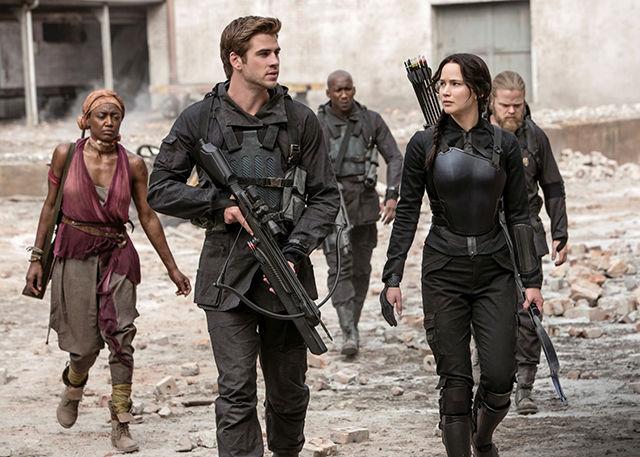
SOURCE: THEHUNGERGAMESEXPLORER.C
The Hunger Games third installment, Mockingjay Part 1, stars Jennifer Lawrence, Liam Hemsworth and Josh Hutcherson. The film was produced by Lionsgate and is based off of the book series.
The Hunger Games: Mockingjay, Part 1, presents the latest installment of Suzanne Collins’ Mockingjay adaptation as a fairly riveting addition to The Hunger Games franchise, but that’s it.
Part 1 continues to follow Katniss Everdeen (Jennifer Lawrence) as she answers the repercussions of her actions in the previous movies in the series. Director Francis Lawrence tells the story in an intimate and brutal way, though it lacks a true middle, clear resolution or a narrative the audience can wholeheartedly follow.
For half a movie, it still manages to entertain viewers, but the “one movie for the price of two” may frustrate viewers. Though Harry Potter and the Deathly Hallows needed two parts to cover all necessary regions of its 759 pages, this cannot be said of Mockingjay, a novel similar to its predecessors in terms of length and theme.
Although The Hunger Games: Catching Fire ended on a grating cliffhanger, it at least made sense for the movie to end where it did—when Katniss broke free from the arena and was forced to acknowledge how her behavior had inspired violent consequences. Part 1, though, attempts to justify its lack of a complete story with a twist ending. Rather than offering any amount of closure, it just ends, and the audience is forced to wait another year for Part 2.
Lawrence offers up a consistently strong performance as “The Girl on Fire,” even if at times she is over-emotional. In the book, Collins describes Katniss as immensely closed-off and distant, but in the film, Katniss cries a lot. Her best scene in Part 1 occurs when she delivers her rousing speech to President Snow (Donald Sutherland): “If we burn, you burn with us!”
Regarding the casting of new characters, the best choice by far was Julianne Moore as President Alma Coin. Nearly unrecognizable with steely gray hair and contact lenses, Moore lends a sympathetic light to Coin’s cold exterior.
With all of the big-name actors involved, one longs for many to have more screen time—more Natalie Dormer, more Philip Seymour Hoffman, more Julianne Moore and more Woody Harrelson. Everyone works great in their respective parts, so hopefully we’ll see more of them in Part 2.
Clunky title aside, the movie’s well-written script lends itself well to the dystopian genre and follows its source material soundly. Despite a few unwelcome deviations, it sticks close enough to the original novel to appease book fans. The bleak setting reflects the dark tone of the book, and the jaunty direction supports Katniss as the deserving narrator.
The most jarring difference between the original and its adaptation comes from the relegation of Finnick Odair (played confidently by Sam Claflin) to the role of a supporting player. Finnick seems tacked on in the movie—an afterthought to the featured war violence. While in the book, Finnick served as an important friend for Katniss, the adaptation demotes him to a person Katniss sometimes talks to. This removes the closeness between Katniss and Finnick to give more time and focus to the Katniss-Peeta-Gale love triangle.
Even worse, the director intercuts Finnick’s “Big Reveal” scene with a suspenseful heist (a scene only in the movie) that draws attention away from Finnick’s statements, glosses over his tragic past and ignores its gravity.
The violence in the movie ranks on a much larger scale than that of the first two movies, and barely holds on to its misleading PG-13 rating through the faithfully applied “no blood” policy. It’s a dystopian war movie, after all.
Overall, The Hunger Games: Mockingjay – Part 1 would come off as the darkest and most biting installment to The Hunger Games franchise—if we had the rest of the movie.